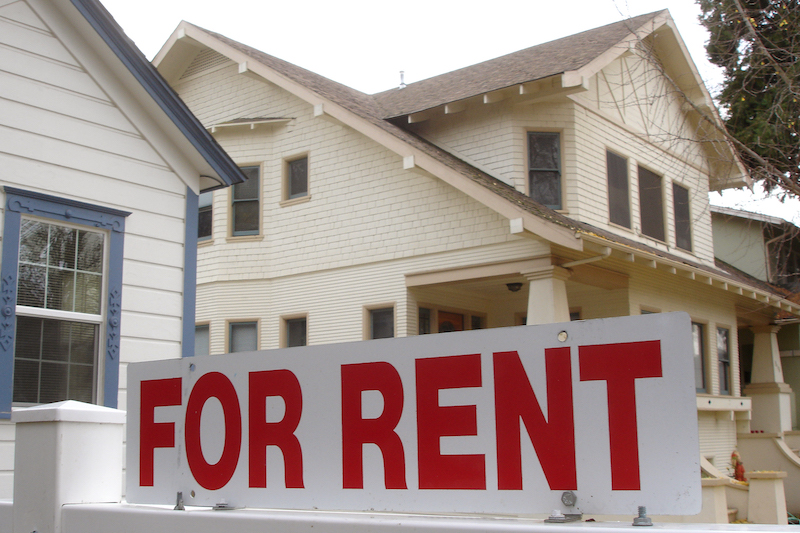COVID-19 SFR Trends Shaping the Future

- SFRs show increased demand, occupancy, retention and rent growth.
- The single-family rental shortage is reflected in higher rent prices.
- Experts predict SFR demand will continue well beyond the COVID-19 pandemic.
Despite the high national unemployment numbers, single-family rents grew 3.8% year-over-year in September 2020, according to the Burns Single-Family Rent Index. “COVID obviously fueled the need for more space,” said Lesley Deutch. The managing principal at John Burns Real Estate Consulting moderated the IMN Single-Family Rental Virtual Forum West panel covering the long-term impacts of COVID-19 on SFRs.
COVID-19 SFR Trends Point to Resilience
The SFR market was strong at the outbreak of the coronavirus and the federal stimulus helped people pay rent and move into larger homes. With the relatively higher rents and incomes of single-family rental tenants, this asset class was less impacted by coronavirus-related job losses.
Deutch added that a recent John Burns survey found that the statistic of 26% of SFR tenants who move out to purchase homes had not changed, even in the environment of historically low interest rates.
SFR Strengths: Demand, Retention, Occupancy and Rent Growth
“The value proposition of single-family rentals is being realized,” said Bryan Smith, the president of property management at American Homes 4 Rent. “COVID was a real accelerant in that process.”
“We’re seeing all-time high occupancy, really strong rent growth, really strong demand. A lot of that’s driven by the retention,” said Drew Flahive, president of Amherst Residential. He noted that the numbers of people wanting to stay at their homes during the pandemic have increased occupancy and rent growth.
The co-founder of VineBrook Homes, Dana Sprong, agreed, describing SFR demand as “insatiable” from when the pandemic hit. Although his company could see a slight rise in bad debt, he projected that the boosted occupancy, increased retention and decreased turnover expenses would offset any uptick. Sprong stated that historically his company’s retention rates were around 70% but today hover at approximately 82%.
The SFR Supply Shortage
The speakers agreed that currently there’s an SFR supply shortage, particularly of institutional quality, professionally managed product. Jonathan Ellenzweig, CIO of Tricon Capital Group, Inc., opined that this has resulted in high single-digit and low double-digit new lease rent growth in many markets. The lack of recently renovated and newly constructed product, compounded by fewer people leaving their SFRs, continues to drive up new lease rent growth.
COVID-19 Impact on Future Strategies
For many owners and operators, the pandemic has reinforced the importance of retaining tenants. This means putting the customers first, with an eye on ultimately achieving a better outcome for owners and investors.
“At Amherst, we really want to keep our tenants in our homes. One, financially, it’s the right outcome for us as owners of the real estate. But two, it’s also the right outcome, given what’s going on in the world,” said Flahive.
Prioritizing retention has meant proactively improving communications with tenants. With the COVID-19 disruption, Amherst gained a better understanding of its residents’ needs and problems. Knowing information in advance helped the company achieve higher performance.
Improved Technology
The pandemic has also advanced the use of technology. Tricon transitioned from 70% to 80% online self-showings to exclusively using this method for showing property. Ellenzweig said even post-coronavirus, his company will continue with 100% self-showings.
Smith analogized the technology to the evolution of retail shopping going online. He commented that today with self-showings, people can literally lease a home on their cell phone within an hour.
SFRs Proceed Forward
With strong fundamentals, the panelists unanimously stated their companies are continuing to move forward. For example, American Homes 4 Rent is active with its $625 million joint venture with J.P. Morgan Asset Management, in seeking to develop approximately 2,500 purpose built single-family rental homes in the West and Southeast. They closed their first project of 34 SFRs in Sovana and Spring Valley, Nevada, in May, amidst the pandemic.
VineBrook updated its financial modeling using analysis from the five prior recessions and continued to purchase product. Although they put a hold on launching in additional markets due to travel restrictions, the company otherwise “continued to march forward,” said Sprong.
The speakers also addressed potential risks, including legislation such as eviction moratoriums and the vulnerabilities of smaller mom-and-pop operations. Yet, they remained highly optimistic about the future of single-family rentals.
Read Arbor Realty Trust’s Q3 2020 Single-Family Rental Investment Trends Report to review our most recent SFR proprietary research and analysis. Contact Arbor today to learn more about our SFR products.

